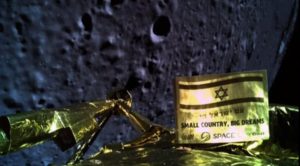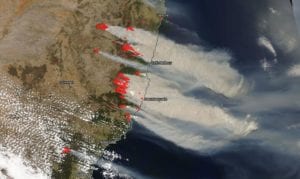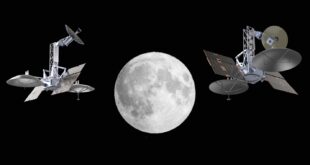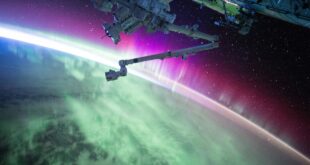SpaceWatch.Global asked its staff and contributors to review 2019 and provide an outlook into 2020. These personal reviews are being published during the holiday season. This is Helen Jameson, Editor-in-Chief of SpaceWatch.Global.

2019 has been a year of huge opportunity tinged with great uncertainty for the space industry.
It’s been a year where talk of a return to the Moon has been backed up with real, tangible action. With the close attempts by both India and Israel to land there once again, we are looking at what could be significant progress in the near future. Whilst the Indian team lost contact with their lander, Vikram, before it made contact with the Moon and Beresheet did not complete the soft landing intended for it, both were enormous achievements and have amplified the message that one day, humankind could succeed at a return to our closest neighbour.

For me, 2019 was always going to be the prelude to the era of the LEO mega constellation. We’ve seen the first of SpaceX’s Starlink satellites get to orbit and, though two failed, the rest seem to be performing well. The first six of OneWeb’s satellites also reached orbit in 2019 and are operating nominally. However, it does seem that the original plan to connect the world and to deliver broadband to the most remote communities, has taken a hit. Business cases have had to evolve to cover other applications because there will always be the question of whether those who are less well off will be able to afford these services. Couple this with extreme competition from multiple players and the question of investment, this is still a very tricky time for the LEO constellations that will result in a competition of the survival of the fittest. Time will tell.
The topic of LEO brings me to another subject that I believe gained more traction in 2019 and that is the question of space debris. If just one or more of these mega constellations comes into existence, the threat of space debris grows exponentially. The risk of a collision in space, resulting in the creation of a huge amount of additional debris becomes pretty much inevitable. The need to pull operators together to create a level of unprecedented dialogue in order to prevent collisions in space and improve Space Situational Awareness is not just important – it is urgent. With an industry on the cusp of making a significant move into LEO, this is of great concern. The more fragments of debris in space, the higher the risk of damage to operational satellites. We must look after our space environment and whilst making money is an operator priority, it is critical that they put the space environment first and work with authorities to put strict guidelines in place to prevent the worst from happening.
Let’s move from the space environment back to our environment here on Earth.
2019 has certainly been a year where awareness of the damage we have done – and continue to do – to our planet has heightened. We’ve seen climate strikes and Extinction Rebellion and other activists literally bring cities to a halt with real concern from the general population about the effect of big business and inaction of governments. I would like to highlight the good that space-based technology can do to enable us to tackle this global threat.
The satellites of today, especially small and rapidly built ones, can place sensors, cameras and radar in space that deliver a wealth of information that can enable governments, businesses and individuals to make a difference. Accurate measurement of the damage that plastics are doing to our rivers and oceans can be tracked. We can use thermal monitoring techniques to reduce the amount of energy needlessly wasted in commercial buildings. We can reduce the impact of Urban Heat Islands. Action can be taken because of this kind of detailed and specific information.

Let’s also not forget the critical work that satellite has been able to do from a humanitarian perspective. 2019 was yet another year of natural disasters. Satellites have been used to help track the devastating bushfires across Australia. Satellite connectivity has been used to connect refugee camps for UNHCR. It has helped with emergency connectivity in the aftermath of Typhoon Kammuri in the Philippines. Satellite still provides the best and sometimes only means of communication in these disaster situations and gives a view of the world that no other technology can rival.
As we move into 2020, I have no doubt that space will continue to become a bigger part of our lives, whether that is in the immediate sense of providing communications where they are needed or enabling us to tackle the effects of climate change; or whether it’s a long-term aim of colonisation of the Moon Mars. Space will continue its integral role – as part of life here on Earth.





